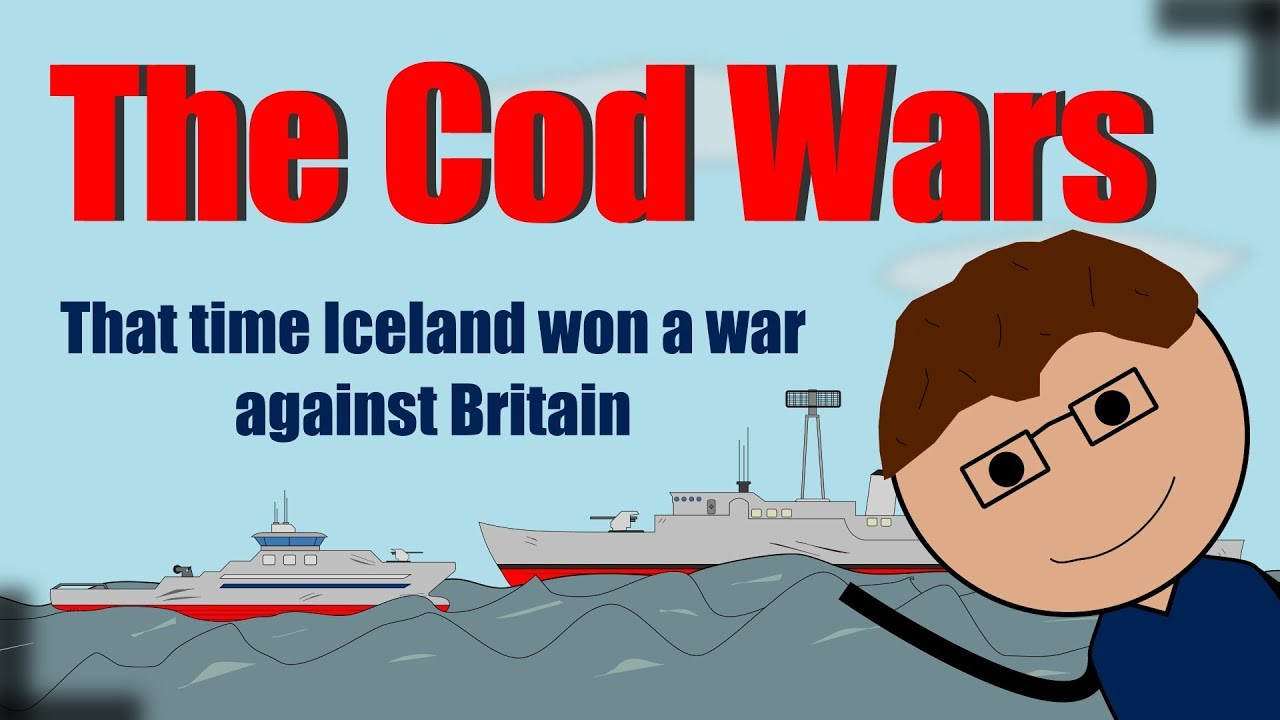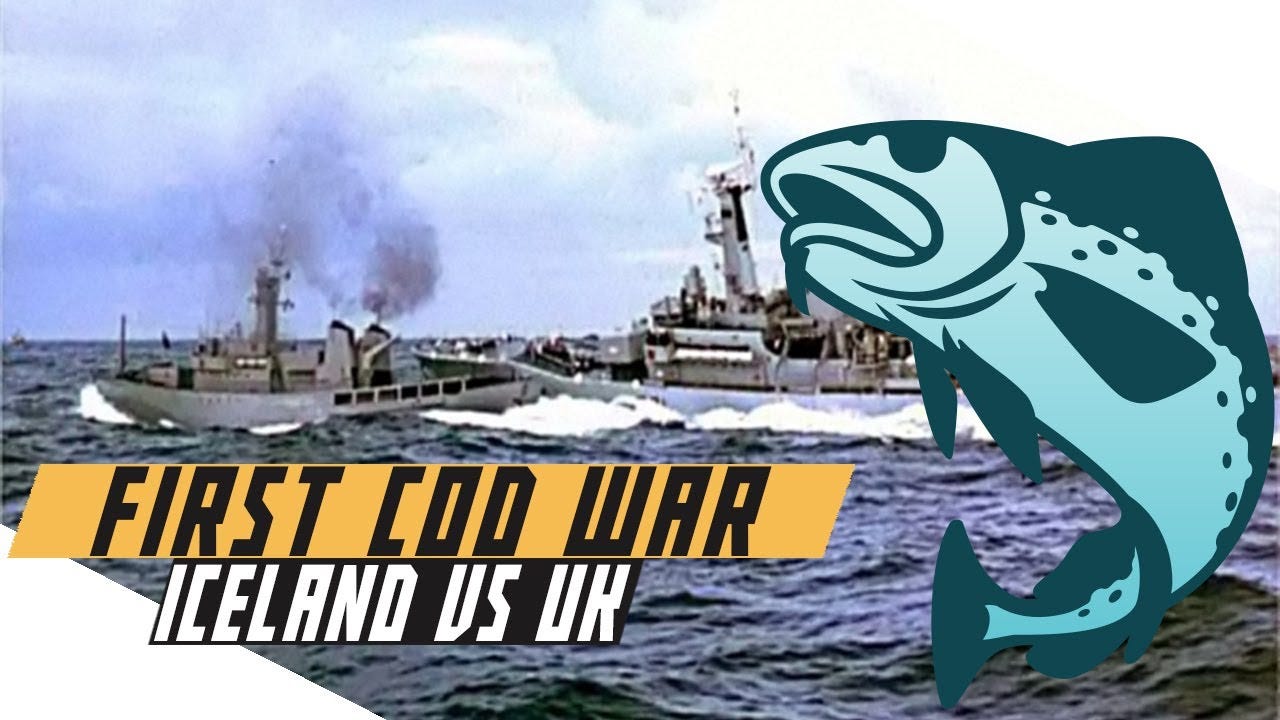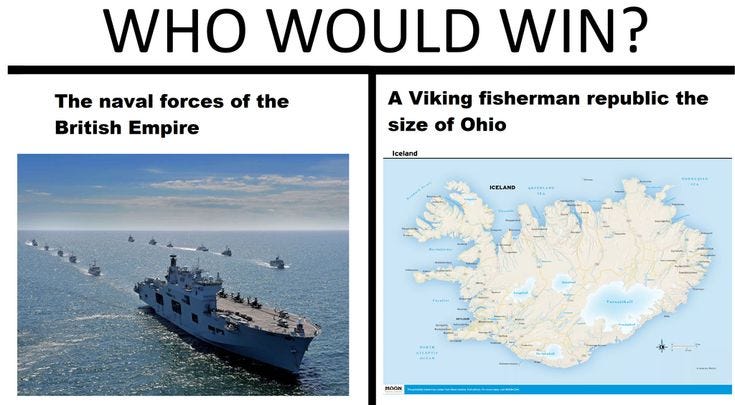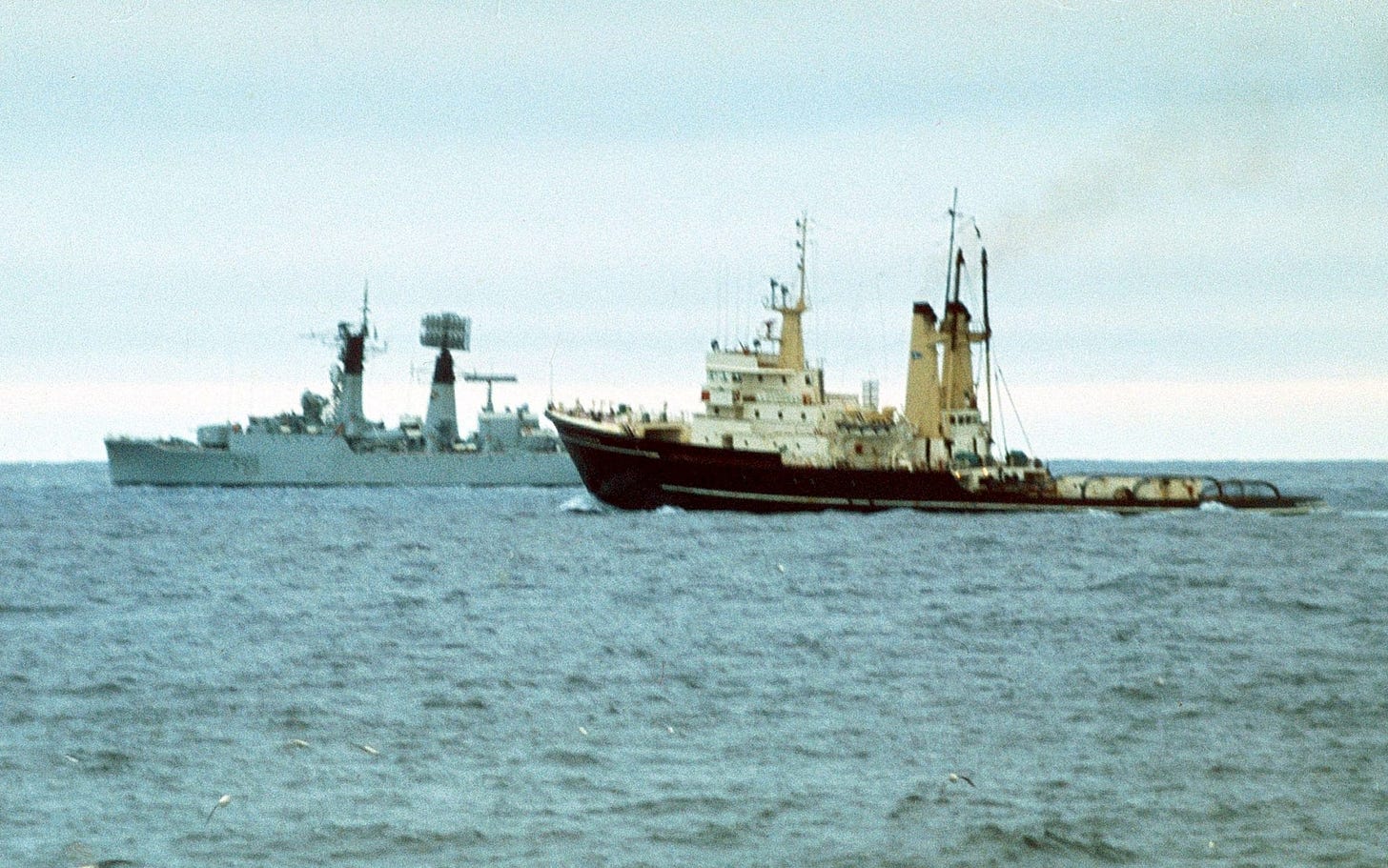(published on Twitter:
https://twitter.com/giffordwatkins/status/1667564756339654656)
The Cod Wars were a series of conflicts between the United Kingdom and Iceland that took place between the late 1950s and the early 1970s. These disputes arose over fishing rights in the North Atlantic, specifically in the waters around Iceland.
Iceland, heavily dependent on its fishing industry, sought to protect its fishing grounds, which were rich in cod and other valuable fish stocks. The United Kingdom, on the other hand, had a significant fishing fleet that relied on these waters for their livelihood.
The first Cod War occurred from 1958 to 1961 when Iceland unilaterally extended its fishing limits from 4 nautical miles to 12 nautical miles. This move provoked the British government, as it restricted the access of British trawlers to the previously open fishing grounds. The British responded by sending Royal Navy warships to protect their trawlers and ensure access to the disputed areas. The conflict ended with a diplomatic resolution known as the "Agreement on the Settlement of Outstanding Claims for Compensation" in 1961.
The second Cod War took place in 1972 when Iceland further extended its exclusive fishing zone to 50 nautical miles. This time, the British government decided to deploy naval vessels to protect their fishing fleet and maintain access to the disputed waters. The confrontations involved ramming incidents between Icelandic patrol vessels and British trawlers. The British eventually withdrew their warships and entered into negotiations with Iceland. In 1976, a settlement known as the "Agreement on Fisheries between Iceland and the United Kingdom" was reached, establishing a 200-nautical-mile exclusive fishing zone for Iceland.
The third Cod War occurred in 1975 and lasted for just a few months. Iceland extended its exclusive fishing zone to 200 nautical miles, effectively claiming sovereignty over a large portion of the North Atlantic. The British, facing severe economic consequences due to the loss of fishing grounds, initially declared they would not recognize the new limits but ultimately accepted the situation. This conflict ended with the "Icelandic-British Cod Wars Agreement" of 1976, which confirmed Iceland's expanded fishing zone.
The Cod Wars had a significant impact on the fishing industry and the economies of both countries involved. Iceland successfully asserted its control over its fishing grounds, enabling it to protect its fish stocks and develop a more sustainable fishing industry. The United Kingdom, on the other hand, experienced a decline in its fishing sector and had to adapt to the new restrictions and find alternative fishing grounds.
It is worth noting that despite the name "Cod Wars," the conflicts were not fought with military force but rather involved naval vessels and diplomatic negotiations.
If I were the Prime Minister of Canada, I would consider any foreign fishing vessel within 500 miles of our shores as a threat to Canadians.
Iceland took several steps to secure its fishing industry and protect its fish stocks. Here are ten key measures the country implemented:
Extension of Fishing Limits: Iceland unilaterally extended its fishing limits from 4 nautical miles to 12 nautical miles in 1958, 50 nautical miles in 1972, and eventually 200 nautical miles in 1975. This expansion gave Iceland greater control over its fishing grounds.
Creation of Exclusive Fishing Zones: Iceland established exclusive fishing zones within its extended limits. This meant that foreign fishing vessels, including those from the United Kingdom, had restricted access to these areas.
Enforcement by Patrol Vessels: Iceland deployed patrol vessels to monitor and enforce its fishing zones. These vessels would patrol the waters, inspect fishing vessels, and ensure compliance with Icelandic fishing regulations.
Use of Naval Escorts: During the Cod Wars, Iceland employed naval escorts to accompany Icelandic fishing vessels and protect them from potential conflicts with foreign trawlers. These escorts aimed to maintain order and deter any encroachment on Icelandic fishing grounds.
Ramming Incidents: Icelandic patrol vessels resorted to ramming foreign trawlers that were fishing within Iceland's extended limits. These actions were taken to physically halt and deter unauthorized fishing activities.
Diplomatic Negotiations: Iceland engaged in diplomatic negotiations with the United Kingdom to resolve the conflicts peacefully. Through dialogue and compromise, agreements were reached that established fishing rights and boundaries.
International Legal Framework: Iceland sought to reinforce its position by advocating for the establishment of a 200-nautical-mile exclusive economic zone (EEZ) internationally. The concept of an EEZ was eventually recognized under the United Nations Convention on the Law of the Sea (UNCLOS) in 1982.
Investment in Fisheries Management: Iceland invested in fisheries management practices, including scientific research, to ensure the sustainability of its fish stocks. By studying fish populations and setting appropriate catch quotas, Iceland aimed to prevent overfishing and maintain a healthy marine ecosystem.
Development of Fish Processing Industry: Iceland focused on developing its fish processing industry to add value to its catch and increase economic returns. This involved investing in processing facilities and technologies to maximize the utilization of fish resources.
Promotion of Responsible Fishing Practices: Iceland emphasized responsible fishing practices, including the use of selective fishing gear and the implementation of measures to minimize bycatch. These efforts aimed to protect non-target species and reduce the environmental impact of fishing activities.
These steps collectively allowed Iceland to secure its fishing industry, protect its fish stocks, and assert control over its fishing grounds, ultimately contributing to the sustainability and economic success of its fisheries sector.








